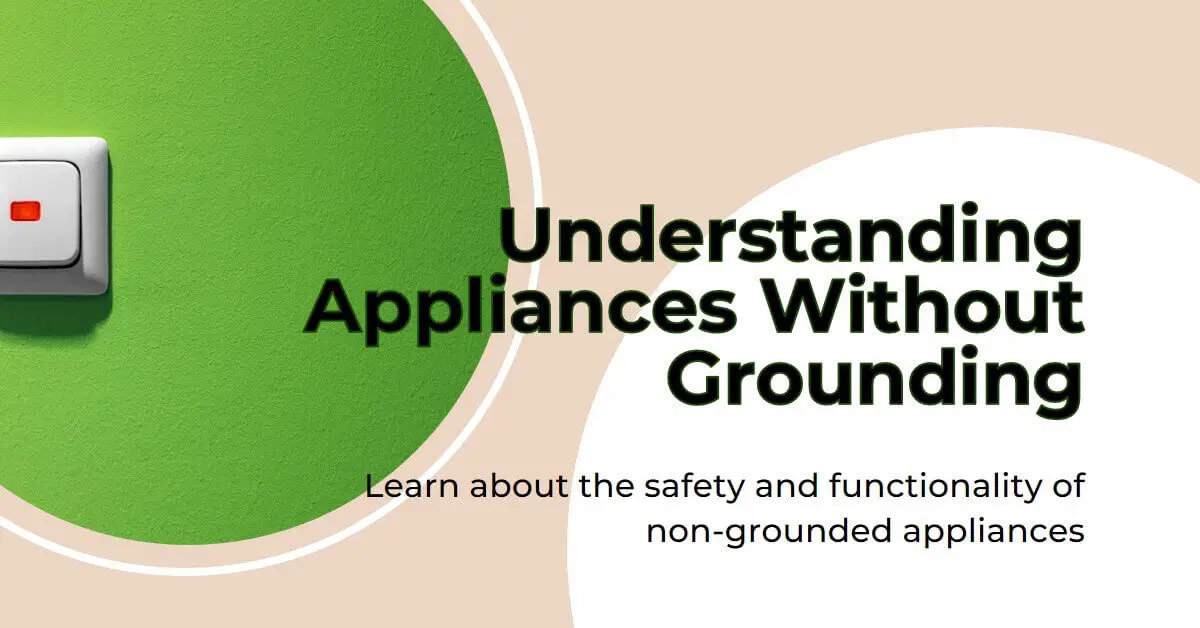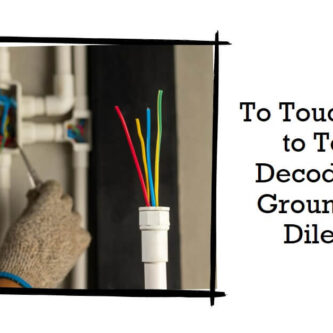Image: “Article Feature Image” by Bing is licensed under CC BY-NC-SA 4.0. Source: Bing Graphic Art. License: CC BY-NC-SA 4.0.
Electrical grounding plays a vital role in ensuring the safety and proper functioning of electrical systems.
Grounding provides a path for electrical current to safely discharge into the ground, protecting both people and equipment from potential hazards.
However, not all appliances require grounding. Some appliances do not need a ground because they are either double-insulated, operate at low voltages, are powered by batteries, or are made of non-conductive materials.
In this article, we will explore the reasons why some appliances do not need a ground and the factors that determine their grounding requirements.
Understanding Electrical Grounding
Electrical grounding refers to the process of connecting an electrical circuit or device to the ground. It serves several important purposes, including:
- Preventing electric shock: Grounding provides a safe path for electrical current to follow in the event of a fault, ensuring that the current flows harmlessly into the ground instead of passing through a person’s body.
- Protecting against electrical surges: Grounding helps divert excessive electrical voltage caused by power surges or lightning strikes, preventing damage to appliances and electrical systems.
- Ensuring equipment stability: Grounding helps stabilize electrical equipment by reducing electromagnetic interference and eliminating static charges.
For more in-depth information read my article: Preventing Electrical Shock: How Grounding Works
Appliances and Grounding
While grounding is a standard requirement for many electrical devices, there are certain situations where appliances do not require grounding. Here are some key reasons why:
Class I vs. Class II Appliances
Appliances are categorized into two main classes: Class I and Class II.
- Class I appliances have a metal casing and rely on grounding for safety. They typically have three-prong plugs, with the third prong serving as the ground connection.
- Class II appliances are designed with additional insulation or other safety measures that eliminate the need for grounding. They often have two-prong plugs and are sometimes referred to as “double-insulated” appliances.
Read also my article: Electric Heater Safety: Why Grounding Is Essential.
Double-Insulated Appliances
Double-insulated appliances feature an extra layer of insulation or other protective measures that provide an additional level of safety.
This design eliminates the need for grounding, as the double insulation prevents electrical current from reaching the external casing.
Examples of double-insulated appliances include certain power tools, handheld devices, and small kitchen appliances.
Look for the “Double Insulated” symbol or markings: Manufacturers often indicate if an appliance is double insulated by placing a symbol or label on the product. This symbol typically consists of two squares, one inside the other, with the words “Double Insulated” written inside or adjacent to the symbol.
Low-Voltage Appliances
Some appliances operate at low voltages, typically 30 volts or less. These low-voltage appliances often do not require grounding due to the reduced risk of electrical shock.
Common examples include certain types of lighting fixtures, doorbells, and low-voltage electronic devices.
Battery-Powered Appliances
Appliances powered by batteries, such as smartphones, laptops, and portable speakers, generally do not require grounding.
Since they operate on DC (direct current) power from batteries, the risk of electrical shock is significantly reduced, eliminating the need for a ground connection.
Non-Conductive or Low-Risk Appliances
Certain appliances, by their very nature, have minimal risk of electric shock or pose no electrical hazards.
These non-conductive or low-risk appliances, such as plastic electronic devices or appliances made entirely of non-conductive materials, typically do not require grounding.
Conclusion
While grounding is crucial for ensuring electrical safety in various applications, not all appliances require a ground connection.
Factors such as the appliance’s design, insulation, voltage levels, and electrical risks determine the need for grounding.
It is important to follow manufacturer guidelines and relevant electrical codes when determining the grounding requirements for specific appliances.
By understanding the reasons why some appliances do not need a ground, we can make informed decisions regarding electrical safety in our homes and workplaces.
you work With Electricity! Don’t leave empty-handed!
Looking to stay ahead of the game in the world of electrical engineering? Subscribe to my YouTube channel and gain access to exclusive content you won’t find anywhere else!
The staff I recommend (Amazon Affiliate Links to products I believe are high quality):
- Economy 120 Volt/60Hz AC Power Source – Step-Down Voltage & Frequency Converters 1800W
- UNI-T Digital Multimeter Tester UT139C
- 50-Amp Extension Cord for RV “100ft”
- Voltage Stabilizer 110/220v
- Hair Dryer “best selling“
- TOSHIBA EM131A5C-BS Countertop Microwave Ovens
Disclaimer: This contains affiliate links to Amazon products. I may earn a commission for purchases made through these links.



